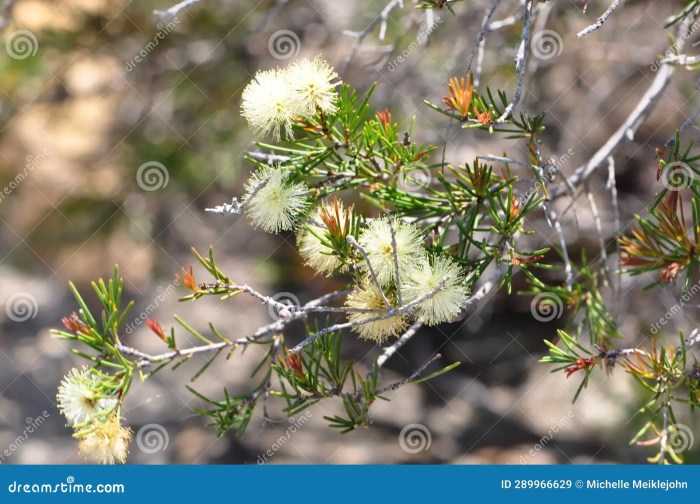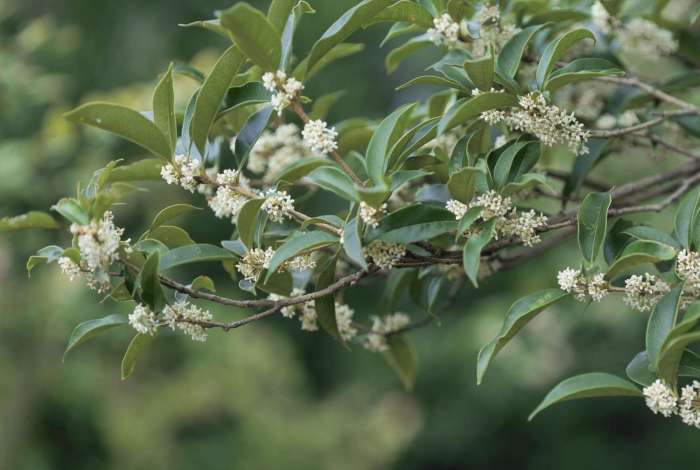Cultivation and Propagation Techniques

Olive tea tree plant – The successful cultivation and propagation of both olive and tea tree plants require a nuanced understanding of their respective needs. Ignoring these crucial factors can lead to stunted growth, reduced yield, and ultimately, failure. This section will dissect the optimal conditions for each, highlighting the stark contrasts and common challenges faced by cultivators. The political dimension lies in the control and distribution of these resources, impacting economic viability and geopolitical influence.
Optimal growing conditions significantly influence the success of olive and tea tree cultivation. The inherent differences in their environmental requirements necessitate distinct approaches to cultivation. A failure to understand and adapt to these specific needs translates to economic losses for farmers and potentially impacts the availability of these valuable resources globally.
Olive Tree Growing Conditions
Olive trees thrive in warm, Mediterranean climates. They require ample sunlight, ideally at least six hours per day. Well-drained soil is crucial; heavy clay soils lead to root rot. The ideal soil pH is slightly alkaline, ranging from 6.0 to 8.0. Water requirements are moderate; while they tolerate drought, consistent watering, especially during fruiting, is beneficial.
Overwatering, however, can be detrimental. The geopolitical implications here are evident in regions with limited water resources where olive cultivation becomes a contentious issue, leading to conflicts over water rights and agricultural policies.
Tea Tree Growing Conditions
Tea trees, in contrast, prefer slightly acidic soil with a pH between 4.5 and 6.0. They require well-drained, moist soil, but not waterlogged conditions. Partial shade is preferred, especially in hotter climates, although some sunlight is necessary for healthy growth. The climate needs to be humid and temperate, significantly different from the arid conditions favoured by olive trees.
The concentration of tea tree cultivation in specific regions, often dictated by climate, can have implications for international trade and economic dependence.
Olive Tree Propagation Methods, Olive tea tree plant
Olive trees can be propagated through several methods, each with its advantages and disadvantages. Seed propagation is the most straightforward but produces highly variable offspring. Grafting allows for the propagation of specific cultivars with desirable traits, ensuring uniformity in the resulting trees. Cuttings, while requiring more technical skill, offer a reliable method for replicating superior plants. Layering, less common for olives, involves bending a branch to the ground and burying a portion to encourage root development.
The choice of propagation method has economic implications, affecting production costs and timelines.
Tea Tree Propagation Methods
Tea trees are commonly propagated using cuttings, a method known for its reliability and speed. Seed propagation is possible but less efficient, resulting in slower growth and inconsistent plant characteristics. Layering is also a viable option, particularly for preserving specific genotypes. The prevalence of cuttings underscores the efficiency and economic benefits of this technique within the tea tree industry.
Cultivation Challenges and Best Practices: A Comparative Analysis
Both olive and tea tree cultivation face unique challenges. Olive trees are susceptible to pests and diseases, such as olive knot and olive fly, necessitating diligent pest management. Tea tree cultivation, on the other hand, is often challenged by fungal diseases and nutrient deficiencies, requiring careful soil management and appropriate fertilization strategies. Best practices include regular pruning, appropriate fertilization, and disease prevention measures tailored to the specific plant and its environment.
The geopolitical aspects here are crucial: access to effective pest control methods and agricultural technology can significantly impact a nation’s ability to compete in the global market.
Step-by-Step Guide: Propagating Olive Trees from Cuttings
Propagating olive trees from cuttings is a technically demanding process, requiring careful attention to detail. The success rate hinges on proper sanitation, timely action, and a suitable environment. The potential for large-scale olive tree propagation through cuttings has economic and political ramifications, impacting olive oil production and trade on a global scale.
- Select healthy, mature, but not overly woody, olive branches in late summer or early autumn.
- Cut the branches into 6-8 inch cuttings, making a clean cut at a 45-degree angle just below a node.
- Remove lower leaves to prevent rot, leaving a few at the top.
- Dip the cut ends in rooting hormone to stimulate root development.
- Plant the cuttings in a well-draining potting mix, burying them up to the lowest leaves.
- Keep the cuttings moist but not waterlogged, and provide a humid environment (e.g., using a plastic bag or humidity dome).
- Place the cuttings in a warm, shaded location.
- Once roots have developed (usually several weeks), transplant the cuttings into larger pots or directly into the ground.
Potential Interactions and Synergistic Effects: Olive Tea Tree Plant
The purported synergy between olive oil and tea tree oil, while marketed extensively, requires critical examination. Claims of combined benefits often lack robust scientific backing, relying instead on anecdotal evidence and the inherent appeal of natural ingredients. A nuanced understanding of their individual properties and potential interactions is crucial to evaluating the validity of these claims and mitigating potential risks.
This analysis will explore the purported synergistic effects, known interactions, and potential contraindications associated with the combined use of these plant extracts.The combination of olive oil and tea tree oil in cosmetic formulations is frequently touted for its purported synergistic effects. Olive oil, rich in antioxidants and emollients, is often presented as a carrier oil, potentially enhancing the penetration and efficacy of tea tree oil’s antimicrobial properties.
Conversely, tea tree oil’s antiseptic qualities might complement olive oil’s moisturizing effects in treating skin conditions. However, the extent of this synergy remains largely unproven, with many products relying on marketing hype rather than rigorous scientific validation. Further research is needed to quantify the extent to which these effects are truly synergistic and not simply additive.
Synergistic Effects in Cosmetic Formulations
While some suggest that olive oil’s emollient properties enhance tea tree oil’s penetration into the skin, leading to improved antimicrobial action, rigorous clinical trials supporting this claim are scarce. The purported synergy is often based on the individual benefits of each oil, rather than a demonstrably enhanced combined effect. Many formulations leverage the perceived “natural” aspect to appeal to consumers, bypassing the need for strong scientific evidence.
The lack of transparent, peer-reviewed studies supporting these synergistic claims raises concerns about the marketing strategies employed by the cosmetics industry.
Interactions Between Olive Oil Consumption and Tea Tree Oil Topical Application
There is limited evidence suggesting direct interactions between the internal consumption of olive oil and the topical application of tea tree oil. However, individuals with known sensitivities to either substance should exercise caution. The potential for allergic reactions, particularly with tea tree oil, remains a concern. While olive oil is generally considered safe for consumption, excessive intake might have gastrointestinal consequences unrelated to tea tree oil application.
This highlights the need for responsible use and awareness of individual sensitivities.
Potential Risks and Contraindications
The combined use of olive and tea tree oil extracts carries potential risks, primarily related to tea tree oil. Tea tree oil, while possessing antimicrobial properties, can cause allergic contact dermatitis in susceptible individuals. Symptoms can range from mild irritation to severe skin reactions. Furthermore, internal ingestion of tea tree oil is toxic and should be strictly avoided.
The presence of olive oil in a formulation does not mitigate these risks associated with tea tree oil. Consumers should be aware of potential allergic reactions and carefully assess their individual risk profiles before using products containing both extracts.
Examples of Combined Products
The following examples illustrate products combining olive and tea tree plant extracts, highlighting their intended use and claimed benefits. It’s crucial to remember that these claims often lack substantial scientific evidence and should be viewed with a critical eye.
Olive tea tree plants, with their amazing scent, need the right conditions to thrive. Thinking about planting them alongside other trees? You’ll want to know the best time to get started, which is also crucial when considering other fruit trees; check out this helpful guide on when should i plant fruit trees to get the timing right.
Proper planting ensures your olive tea tree plants flourish and give you years of fragrant enjoyment.
- Product A: A facial cleanser marketed for acne-prone skin. Claimed benefits include cleansing, antimicrobial action, and moisturizing. The actual effectiveness is unsubstantiated.
- Product B: A body lotion promoted for its soothing and moisturizing properties. The inclusion of tea tree oil is purported to address minor skin irritations, but this claim lacks rigorous clinical support.
- Product C: A hair treatment marketed for dandruff control. The combination aims to provide both moisturizing and antimicrobial effects. However, efficacy compared to established treatments remains questionable.
Visual Representation of Plant Morphology

The stark visual differences between the olive tree and the tea tree highlight the vast divergence in their evolutionary paths and ecological niches. A superficial comparison reveals not only contrasting aesthetics but also underlying differences in their adaptive strategies. Understanding these visual distinctions is crucial for accurate identification and effective cultivation.
Olive Tree Morphology
The olive tree (Olea europaea), a symbol of resilience and longevity, exhibits a characteristic morphology. Mature trees often reach heights of 8-15 meters, though some cultivars remain smaller, their size influenced by environmental factors and pruning practices. The trunk, typically thick and gnarled with age, displays a rough, often fissured bark, ranging in color from grey-brown to almost black.
Its texture is coarse and deeply furrowed, reflecting years of exposure to sun and wind. Branches spread widely, creating a dense, rounded canopy, particularly in older specimens. The leaves are lanceolate, meaning they are lance-shaped, with a length of 4-10 cm and a width of 1-3 cm. They are oppositely arranged, meaning two leaves arise from the same point on the stem.
Their upper surface is dark green and leathery, while the underside is silvery-green and covered with fine hairs, reducing water loss. The small, creamy white flowers, appearing in spring, are arranged in panicles—loose, branched clusters. The fruit, the olive, is a drupe, an oval-shaped fleshy fruit with a single hard stone containing a seed. Unripe olives are green, turning to various shades of purple or black as they ripen, their color dependent on the cultivar and growing conditions.
Their texture changes from firm to softer during ripening.
Tea Tree Morphology
The tea tree (Melaleuca alternifolia), a smaller shrub compared to the olive tree, typically reaches a height of 2-8 meters. Its growth habit is often described as upright and bushy. The bark is thin and papery, shedding in strips, revealing a smooth, light grey or brown underlayer. Unlike the olive tree’s thick, gnarled trunk, the tea tree’s trunk remains relatively slender.
The leaves are alternate, meaning they are arranged singly at intervals along the stem, and are linear to lanceolate, measuring 1-3 cm in length and only a few millimeters in width. Their texture is smooth and leathery, and they are a vibrant, aromatic green. The flowers, unlike the delicate white blossoms of the olive tree, are more striking.
They are creamy white to pale pink, small and numerous, arranged in dense spikes or cylindrical clusters at the ends of the branches. The tea tree does not produce a fruit in the same way as the olive; instead, it forms small, woody capsules containing numerous tiny seeds.
Essential FAQs
What are the common side effects of tea tree oil?
Tea tree oil can cause skin irritation, allergic reactions in some individuals, and should not be ingested.
Can olive oil be used for skincare?
Yes, olive oil is a common ingredient in many skincare products due to its moisturizing and antioxidant properties.
Are olive trees and tea trees related?
No, they belong to entirely different families; olive trees to Oleaceae and tea trees to Myrtaceae.
How long do olive trees live?
Olive trees can live for hundreds, even thousands of years, depending on the conditions.
Where are tea trees primarily grown?
Tea trees are primarily grown in Australia, although cultivation is expanding globally.
